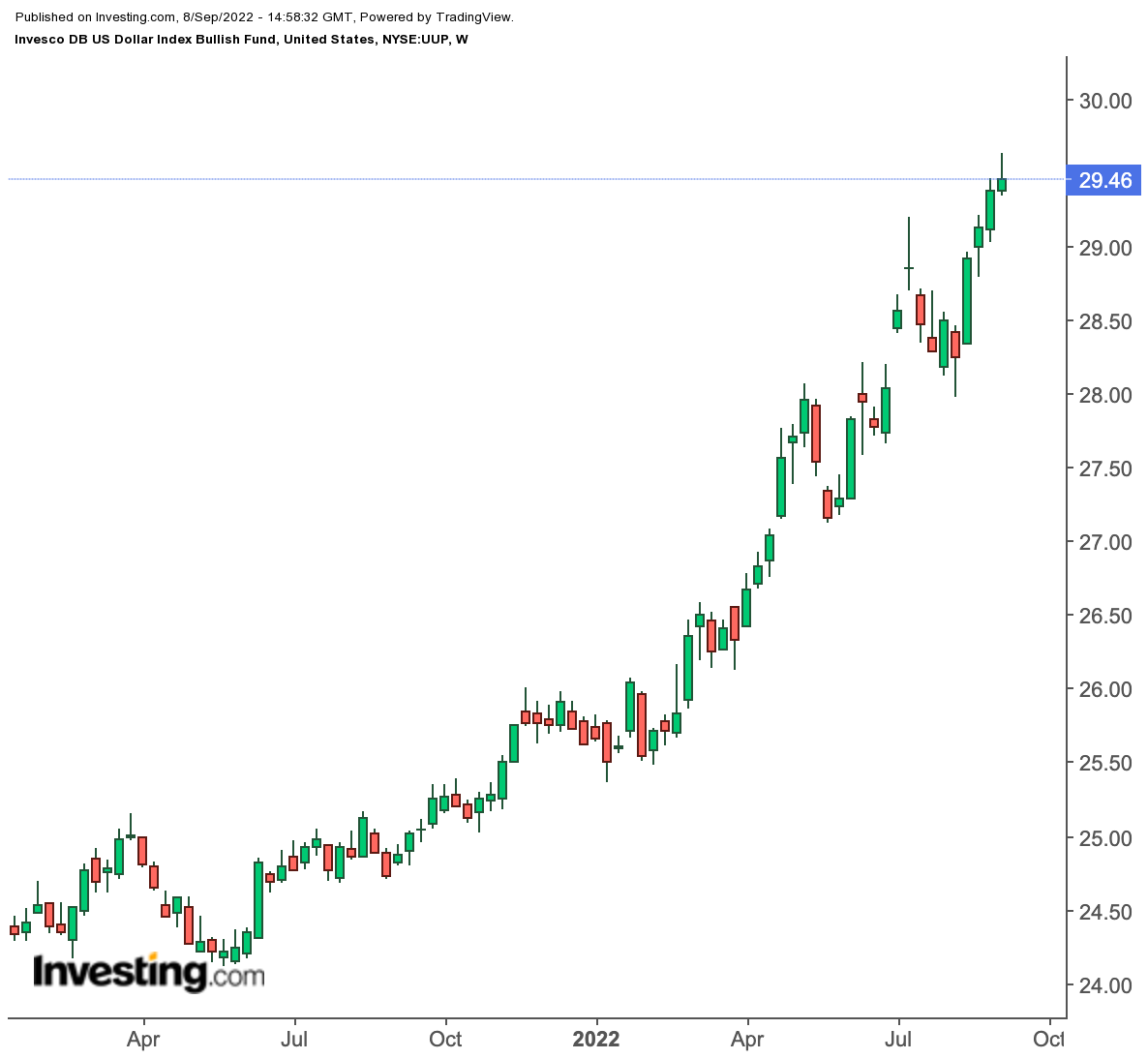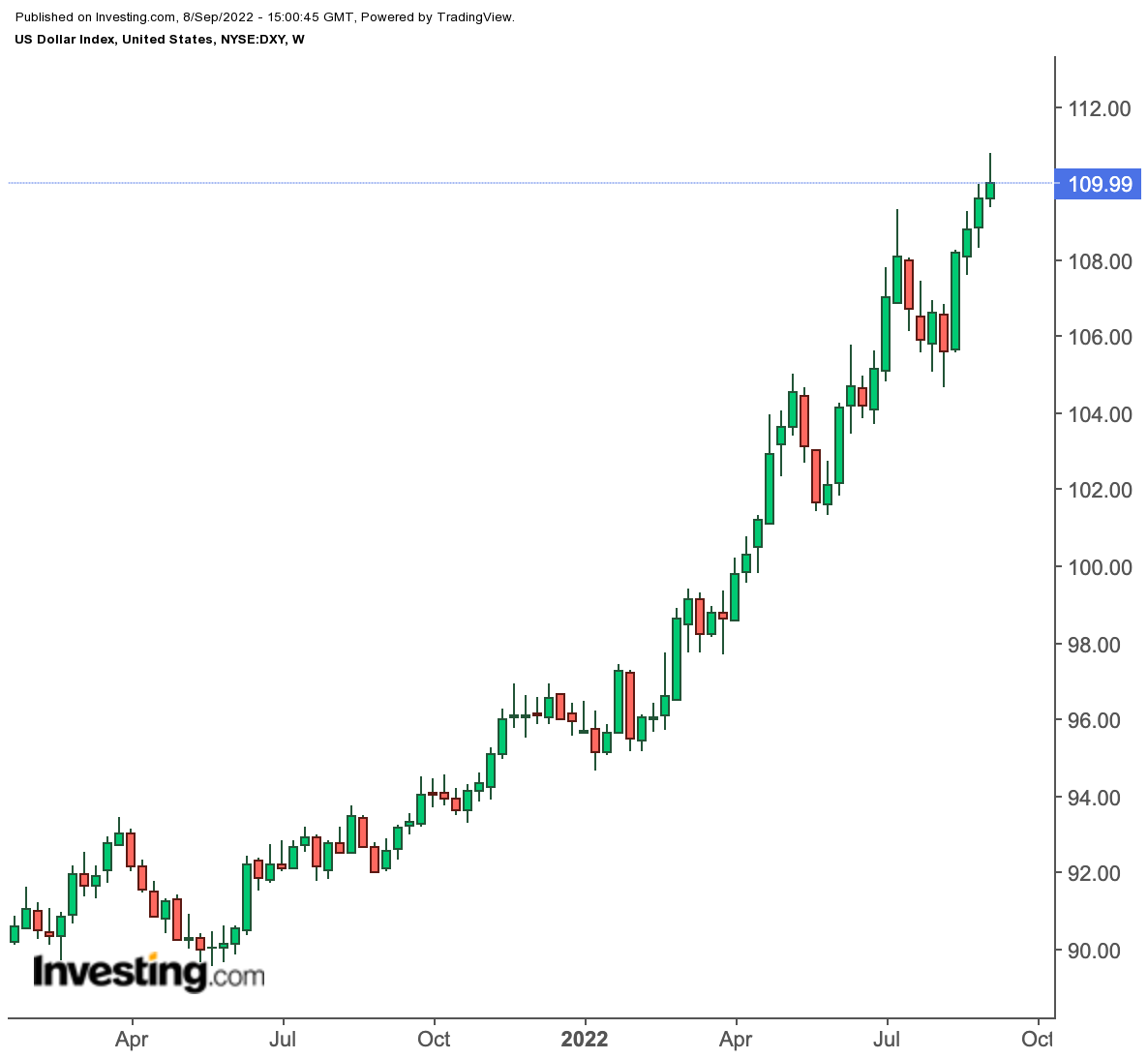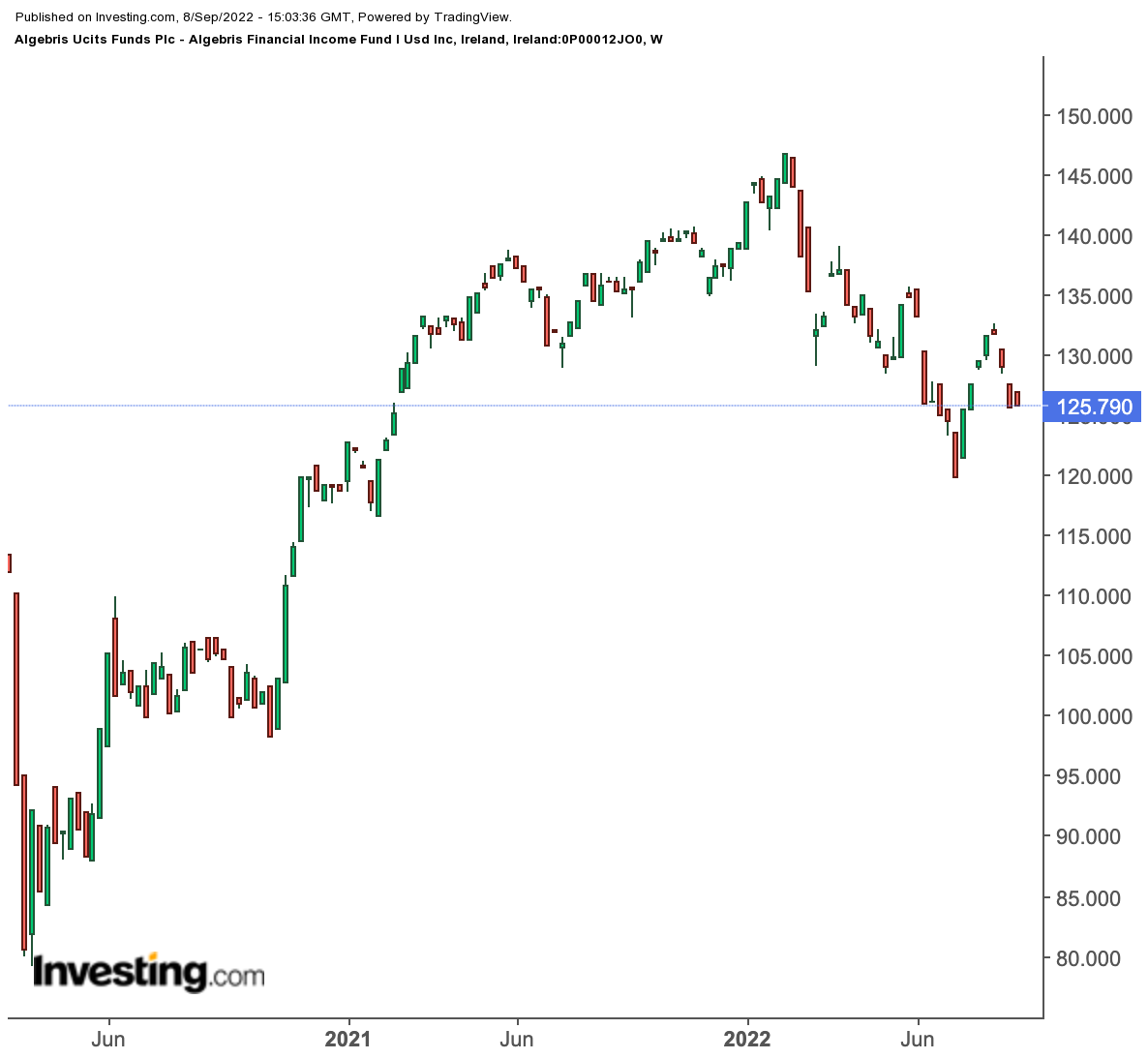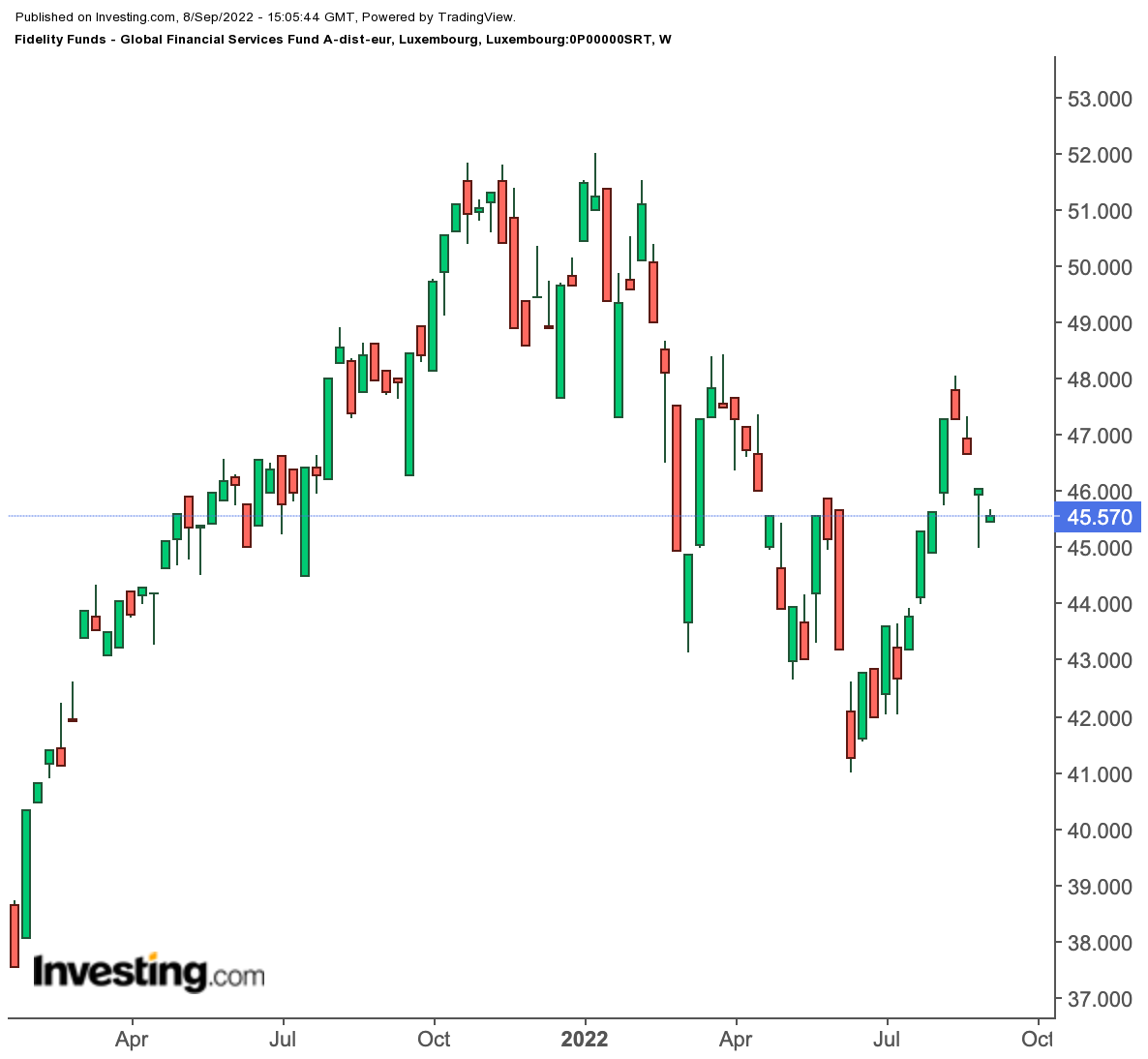- The ECB delivered its largest single rate hike in history earlier today
- The Fed is expected to follow the steps of its European counterpart and raise rates by 75bps in its September meeting
- The U.S. dollar and the global banking sector are some of the greatest winners against such a backdrop
Earlier today, the European Central Bank (ECB) decided to raise interest rates by 75 basis points. The move is the largest single rate hike in the Frankfurt-based central bank's history—tied with 1999.
The region faces rising energy costs and potential supply shortages due to Russia's war in Ukraine. All this raises fears of a downturn in the economy, and surveys show that factories are already slowing down as consumers' purchasing power deteriorates.
Macro data at the start of the week showed that German factory orders fell for the sixth consecutive month, raising concerns about the growth outlook. In addition, the Eurozone construction PMI fell to 44.2—a fourth consecutive month of decline and the steepest since January last year.
Meanwhile, the Federal Reserve will also decide on interest rates at its next meeting on September 20-21. Barring a surprise in the next US CPI data, it will likely impose another 75 basis points hike.
In August, Fed Chairman Powell said there should be no doubt that the Fed is not close to stopping its drive to reduce inflation and that it could continue to raise rates throughout 2023. The statement raised market expectations that the Fed would raise interest rates another 75 basis points (which would make three consecutive increases of this magnitude).
Cleveland Fed President Loretta Mester recently said that the Fed is fully committed to fighting inflation and that she favors raising interest rates above 4% early next year and keeping them there. In a moment of utmost honesty, she also acknowledged that the Fed's earlier analysis was incorrect and that they should have started raising interest rates earlier.
Against this backdrop, investment alternatives focused on the banking sector and on the dollar present significant growth potential.
How To Take Advantage Of The U.S. Dollar's Strength
The U.S. dollar remains one of the strongest currencies so far this year.
The primary reasons behind the U.S.-backed currency rally are the Federal Reserve's monetary policy of aggressively raising interest rates and the fact that the greenback is acting as a haven asset in a complicated year.
Three facts help prove this point:
- The Japanese yen weakened against the dollar, reaching its lowest level since August 1998 and extending the year-to-date depreciation to more than -20%, weighed down by the widening policy gap between the Fed and the Bank of Japan.
- The pound sterling remained near $1.15, the lowest level since 1985.
- The euro fell below $0.99 for the first time in almost 20 years.
Through ETFs And Funds:
- WisdomTree Bloomberg U.S. Dollar Bullish Fund (NYSE:USDU)

USDU is an exchange-traded fund incorporated in the United States. The fund is actively managed and seeks to provide a total return, before expenses, that exceeds the performance of the Bloomberg Dollar Total Return Index.
It is structured to potentially benefit when the U.S. dollar appreciates relative to a basket of global currencies.
The fee is 0.5%, and it began life on December 18, 2013.
So far in 2022, its return is +11.86%.
- Invesco DB U.S. Dollar Index Bullish Fund (NYSE:UUP)

The fund is designed for investors who want a convenient way to invest in and track the value of the U.S. dollar relative to a basket of the world's six major currencies: the euro, Japanese yen, British pound, Canadian dollar, Swedish krona, and the Swiss franc.
It was launched on February 20, 2007, and its commission is 0.75%.
This year, it has accumulated +14.90%.
Through The Dollar Index

The dollar index is a measure of the value of the U.S. dollar relative to the value of a set of currencies belonging to most of the United States' most significant trading partners.
It is, therefore, a weighted geometric average of the value of the dollar relative to a range of currencies:
- Euro 57.6%
- Japanese yen 13.6%
- British pound sterling 11.9%.
- Canadian dollar 9.1%.
- Swedish krona 4.2%
- Swiss Franc 3.6%
Thus, the index allows investors to see the evolution of the greenback in relation to a group of currencies.
Since its inception in 1973, the index has risen and fallen sharply, reaching its highest point in February 1985 with a value of 164.72 and its lowest point in March 2008 with a value of 70.698.
You can trade this index through futures, and its mechanics are the same as if you invest with futures in other markets.
The dollar index continues to gain ground and is above the 110 zone, reaching levels not seen since June 2002.
Taking Advantage Of The Global Banking Sector
The banking sector is the most favored by the rise in interest rates since banks increase the brokerage margin, i.e., the difference between the interest paid by the bank to those who borrow money and the interest charged to those who lend it to them.
Let's look at two funds:
- Algebris Ucits Funds Plc - Algebris Financial Income Fund I Usd Inc
The fund's manager invests in the banking sector, in banks around the world, so that the unitholder can also benefit from interest rate hikes of other central banks outside Europe.
The fund was created on April 17, 2015, and its benchmark is the Lyxor MSCI World Financials (SIX:LYFINW).
Its geographical distribution is diversified: the United States (44%), Eurozone (35.81%), the United Kingdom (9.58%), Asia (4.82%), and Latin America (2.23%).
The fee is 1.02% and its performance over the last 12 months is 4%.

The fund seeks to provide investors with long-term capital growth by investing primarily in equity securities of companies worldwide engaged in providing financial services.
It was created on April 20, 2016, and its 3-year annualized return is 8.59%.
Its benchmark is the MSCI ACWI Financials, and its fee is 1.91%. Its geographic distribution: the United States (60.6%), the United Kingdom (10.02%), Euro Zone (9.52%), and Asia (10.41%).
Disclosure: The author currently does not own any of the securities mentioned in this article.
